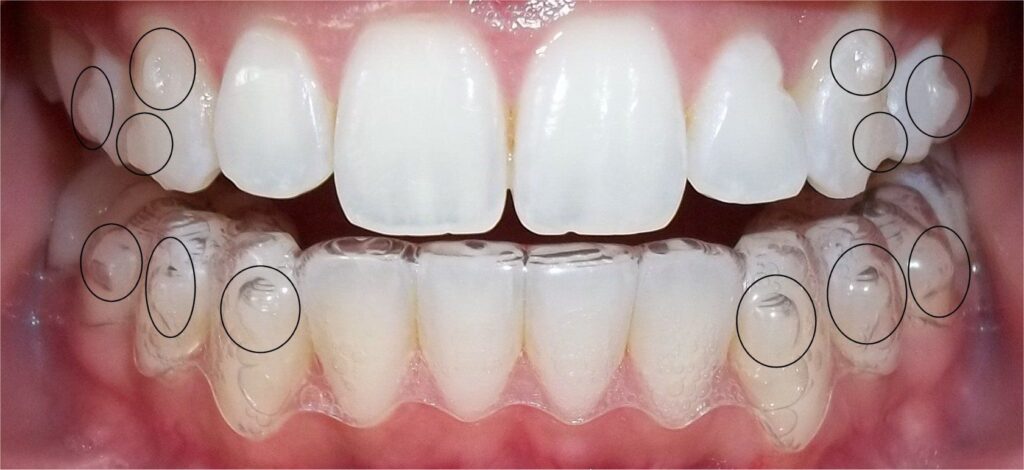Attachments or buttons are tiny tooth-colored pieces will be placed on your teeth to make your clear aligner treatment more effective.
WHAT ARE ATTACHMENTS?
Attachments are small ridges made of orthodontic material that are bonded to your teeth. Attachment are tooth-colored, so they blend in well with your enamel and come in various shapes and sizes depending on function. Your aligners will fit perfectly and smoothly over them.
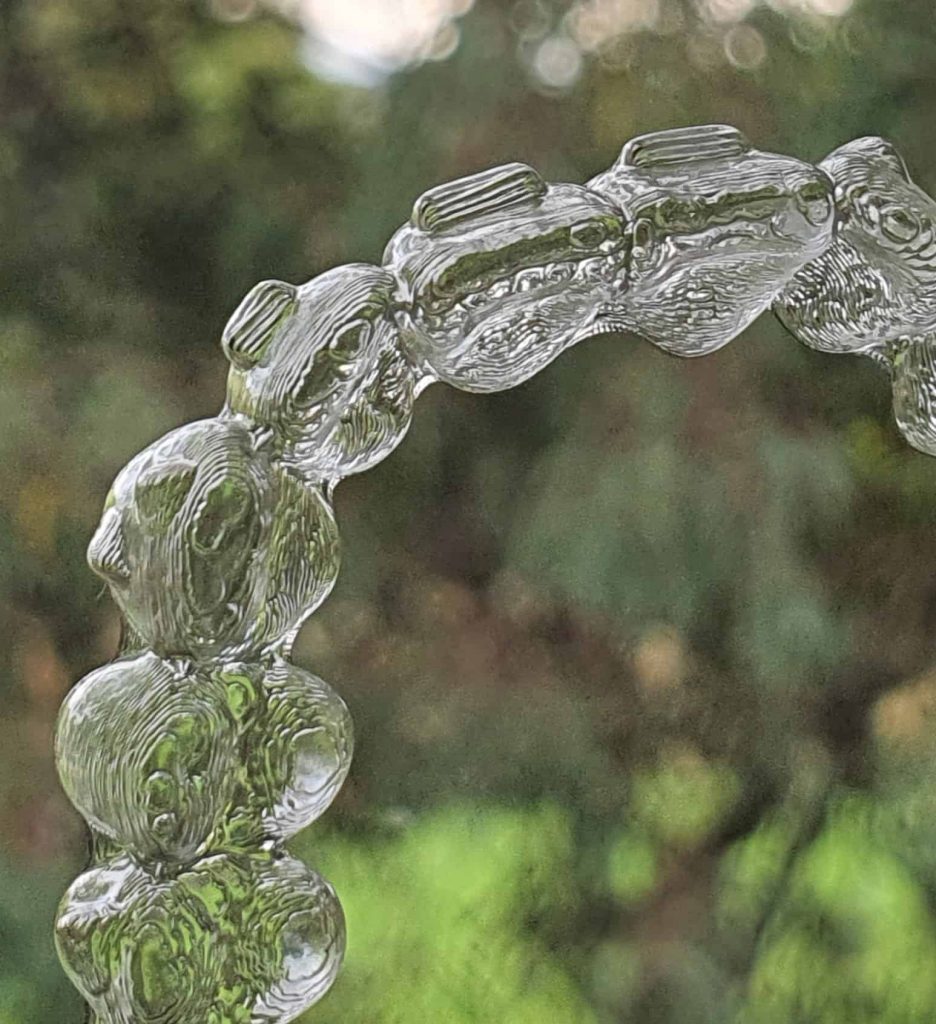
WHY ATTACHMENTS?
With the assistance of attachment, aligners can also treat more orthodontic conditions. Attachment act like little handles, and matching shapes in your aligner can click into place around them. This allows your aligner to provide gentle directed pressure, making more complex directional tooth movement possible.
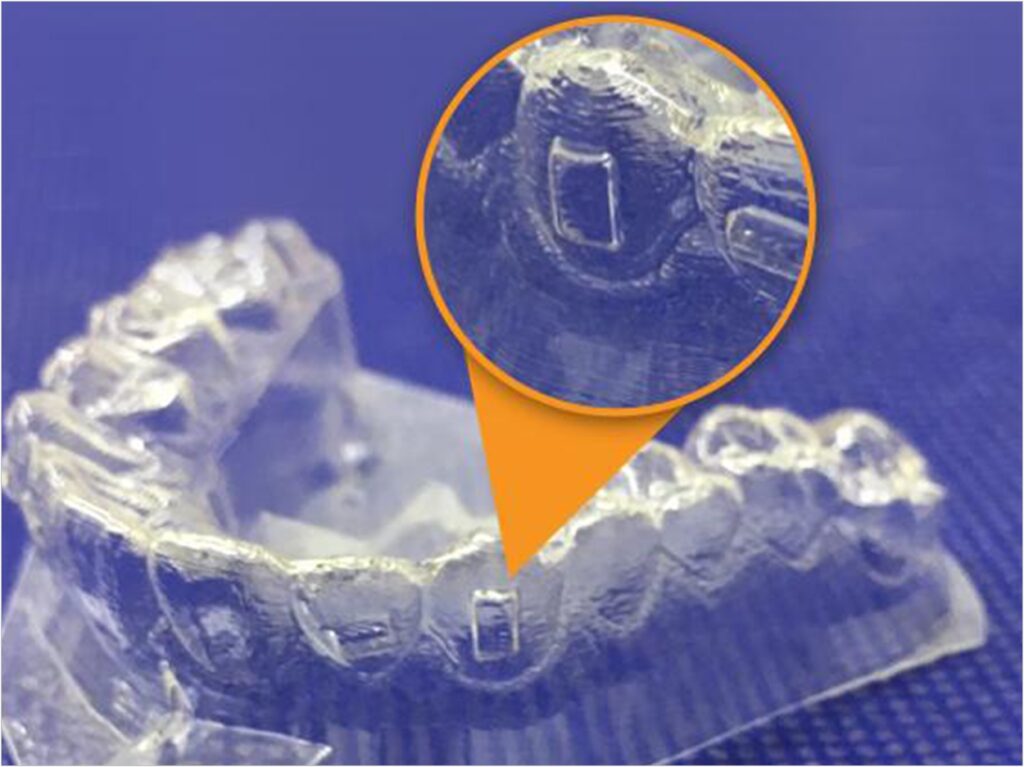
Aligners can help turn a rotated tooth, realign a tooth that has not erupted correctly. Just as the shape of your aligner, careful planning for placing of the attachment is as well. Indeed computer modeling allows us to give you an attachment that has been customized for a perfect fit to each individual tooth and perfectly placed to move the tooth where it needs to be. Attachments are temporary, and is removed after your treatment
HOW Its FIXED?
The attachments are tiny, none are more than 5mm long. Made with;
- synthetic material ( composite ).
- To attach them, your orthodontist would first clean and etch the surface of your teeth.
- Application of bonding agent.
- Utilizing a template tray, the dentist would place the attachments at a precise position and insert them carefully.
- Using ultraviolet light, the attachment would be hardened.
- Any excess material will be wiped away, and your teeth are clean.
- After waiting an hour, you can eat or drink as you wish. There is no dietary restriction.
- The entire process requires no anesthesia or medication. The material used is a type of composite resin. It does not cause allergy or pain.
TAKING CARE
While you change your aligners frequently, your attachments probably will not. So make sure you treat them well.
Attachments are generally stain-resistant but for a regular coffee or tea drinker, you may notice some discoloration, especially on the enamel surrounding the attachment.
Remember to brush around them carefully. Food can stick around them after eating, so you want to be sure to brush thoroughly after every meal. If one falls off, inform your orthodontist. Therefore one way to help keep your attachments secure is to remove your aligners gently.
DOES IT HURT?
You can expect a little bit of discomfort in the days after attachment applied. The attachment discomfort comes from the increased orthodontic force that attachments enable for your clear aligners, causing your teeth to move more dramatically than they had before. In other words The more you wear your aligners with your attachments, the faster you used to it.
SELECTION AND DESIGN
- Attachments serve several purposes in aligner therapy. The most basic function is retention.
- Aligners have to be fully seat to express the movements, . Aligners have flexibility that needs to be compensated when seated onto arches that require movement.
- The second function of attachments is to facilitate movement by changing the shape of the tooth to provide an active surface for pushing.
- The active surface of the optimized attachment is oriented to deliver the desired forces while simultaneously extruding, rotating or providing root control. In addition each attachment has a specific surface where the aligner provides that pressure, reliving of non active surface to avoid any interference. Of course for retention, conventional attachments are very effective. Thus by increasing the size of the attachment from 3mm to 4mm or 5mm width greater retention can be achieved.
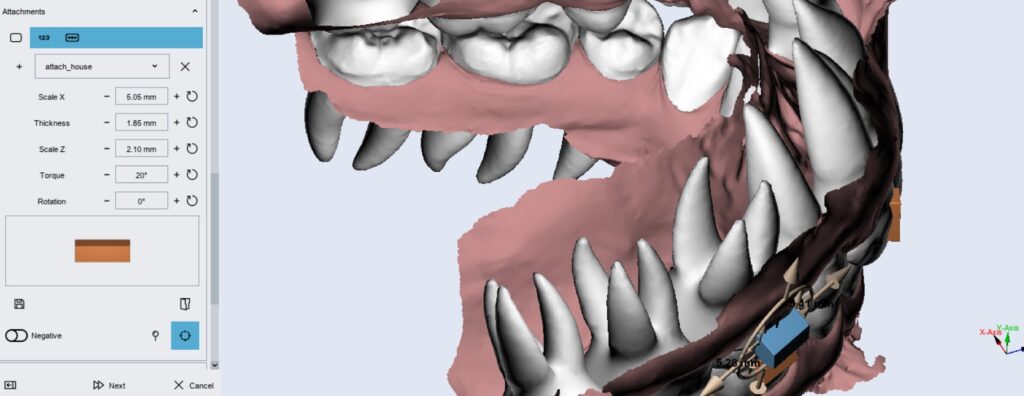

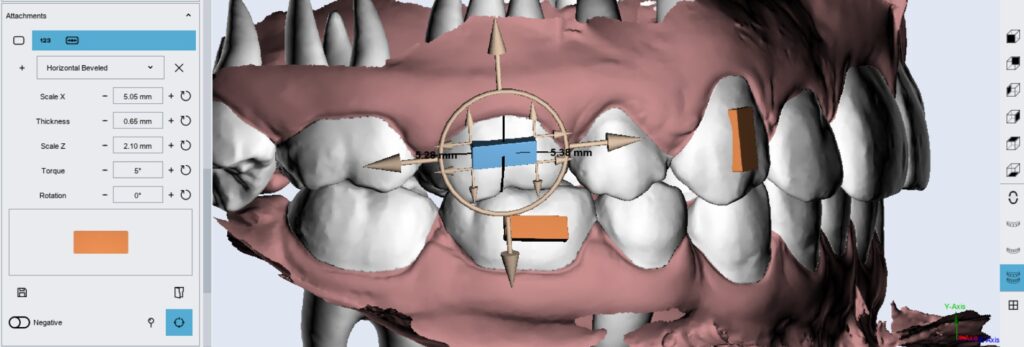
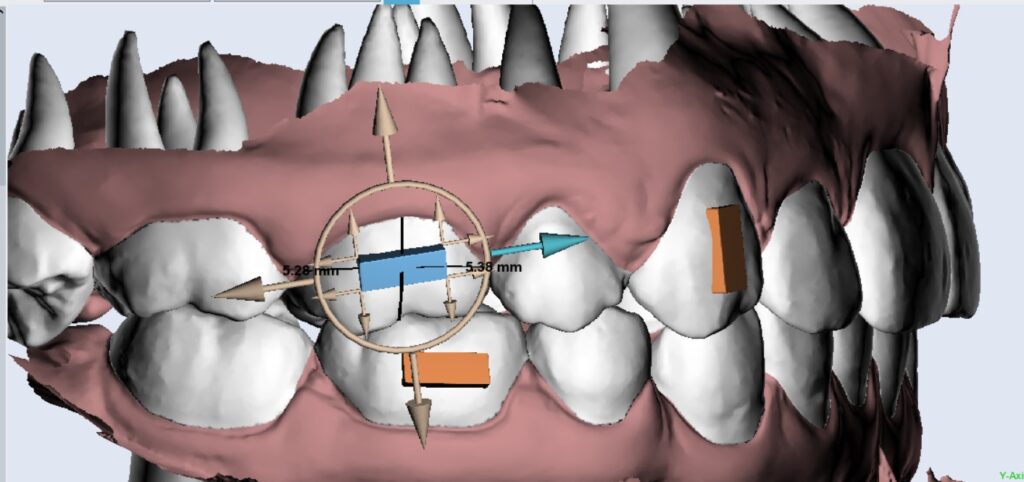
For Active movements,
Data driven analysis can design optimized attachment . These attachment customized by most modern technology software to deliver specific force systems. Adding of certain attachment for threshold movement .When these attachments match the desired force system, they are the recommended selection when you are considering traditional attachments vs. aligner optimization. Despite this some movements do not meet the criteria to generate an optimized design. This is where modifications to conventional attachments can be made to approximate the design of optimized attachment normally selected for the desired movements. As a result the adjustment of position and amount of bevel is by using 3D controls

